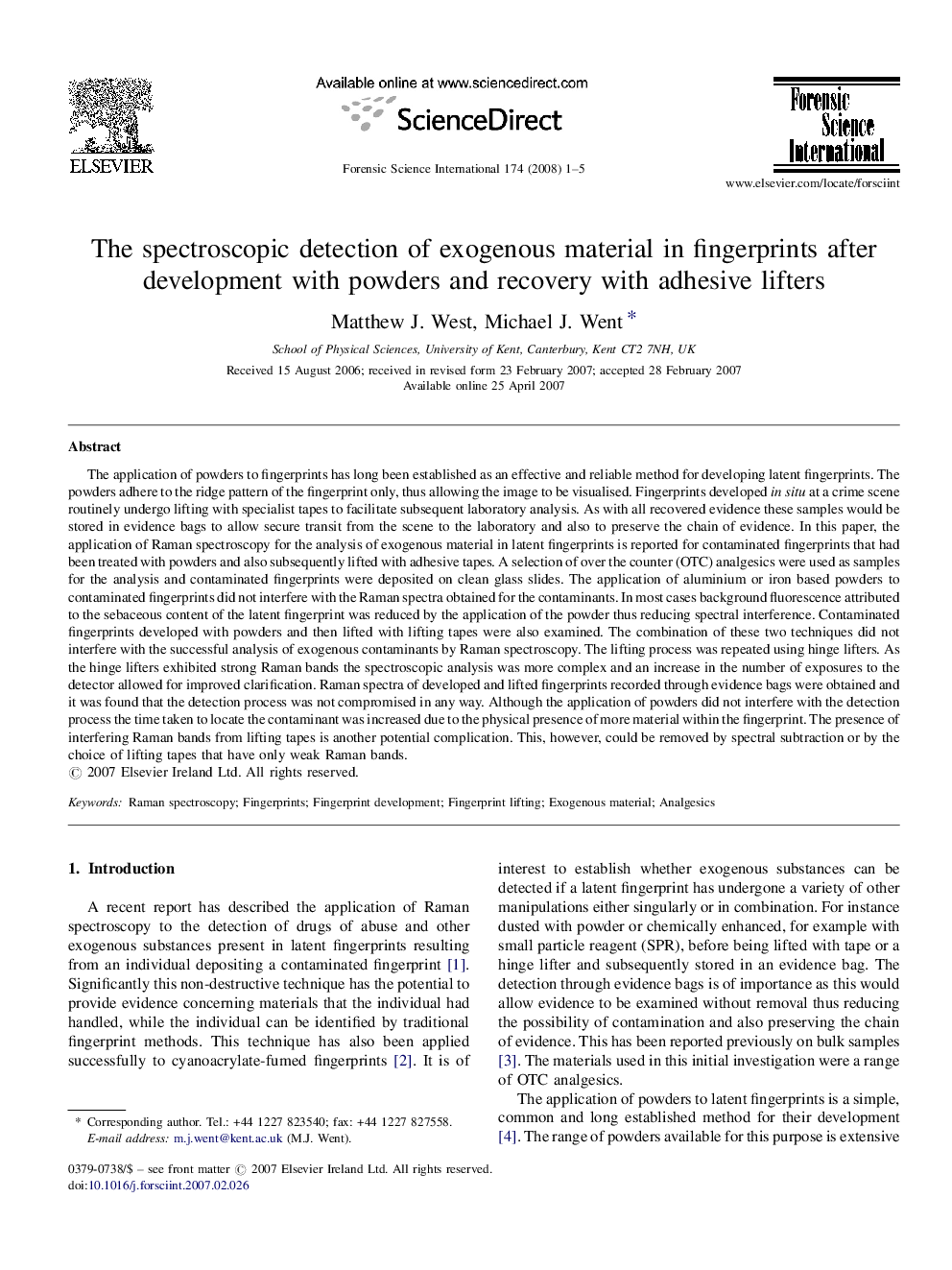| کد مقاله | کد نشریه | سال انتشار | مقاله انگلیسی | نسخه تمام متن |
|---|---|---|---|---|
| 97850 | 160512 | 2008 | 5 صفحه PDF | دانلود رایگان |

The application of powders to fingerprints has long been established as an effective and reliable method for developing latent fingerprints. The powders adhere to the ridge pattern of the fingerprint only, thus allowing the image to be visualised. Fingerprints developed in situ at a crime scene routinely undergo lifting with specialist tapes to facilitate subsequent laboratory analysis. As with all recovered evidence these samples would be stored in evidence bags to allow secure transit from the scene to the laboratory and also to preserve the chain of evidence. In this paper, the application of Raman spectroscopy for the analysis of exogenous material in latent fingerprints is reported for contaminated fingerprints that had been treated with powders and also subsequently lifted with adhesive tapes. A selection of over the counter (OTC) analgesics were used as samples for the analysis and contaminated fingerprints were deposited on clean glass slides. The application of aluminium or iron based powders to contaminated fingerprints did not interfere with the Raman spectra obtained for the contaminants. In most cases background fluorescence attributed to the sebaceous content of the latent fingerprint was reduced by the application of the powder thus reducing spectral interference. Contaminated fingerprints developed with powders and then lifted with lifting tapes were also examined. The combination of these two techniques did not interfere with the successful analysis of exogenous contaminants by Raman spectroscopy. The lifting process was repeated using hinge lifters. As the hinge lifters exhibited strong Raman bands the spectroscopic analysis was more complex and an increase in the number of exposures to the detector allowed for improved clarification. Raman spectra of developed and lifted fingerprints recorded through evidence bags were obtained and it was found that the detection process was not compromised in any way. Although the application of powders did not interfere with the detection process the time taken to locate the contaminant was increased due to the physical presence of more material within the fingerprint. The presence of interfering Raman bands from lifting tapes is another potential complication. This, however, could be removed by spectral subtraction or by the choice of lifting tapes that have only weak Raman bands.
Journal: Forensic Science International - Volume 174, Issue 1, 15 January 2008, Pages 1–5